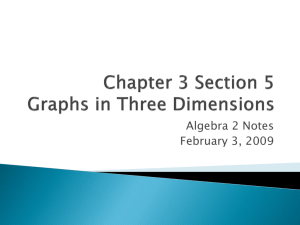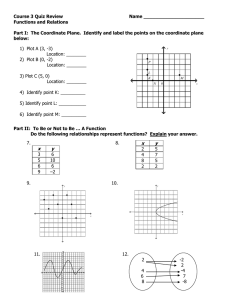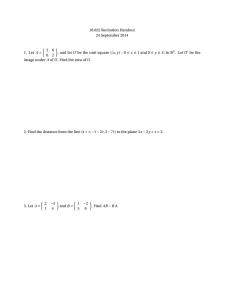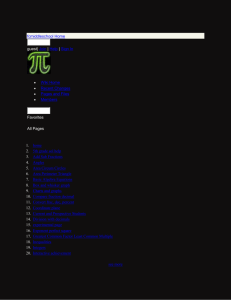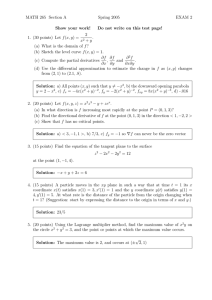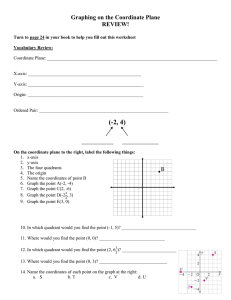Plane Frame Structural Analysis Programs
advertisement
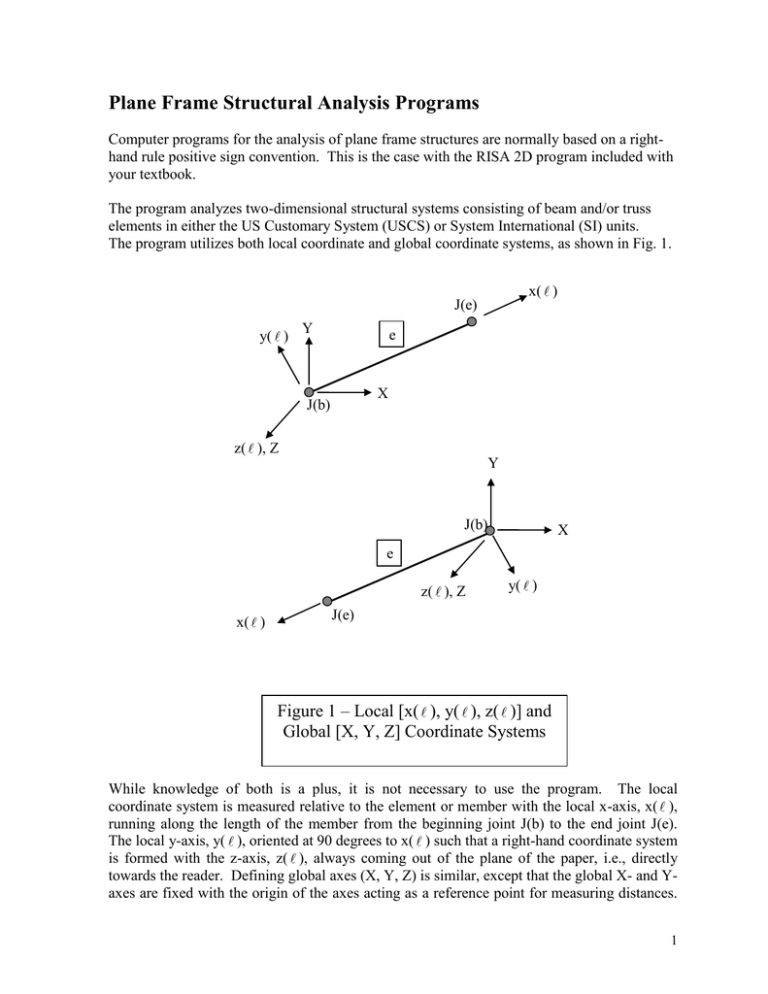
Plane Frame Structural Analysis Programs Computer programs for the analysis of plane frame structures are normally based on a righthand rule positive sign convention. This is the case with the RISA 2D program included with your textbook. The program analyzes two-dimensional structural systems consisting of beam and/or truss elements in either the US Customary System (USCS) or System International (SI) units. The program utilizes both local coordinate and global coordinate systems, as shown in Fig. 1. x( ) J(e) y( ) Y e X J(b) z( ), Z Y J(b) X e z( ), Z x( ) y( ) J(e) Figure 1 – Local [x( ), y( ), z( )] and Global [X, Y, Z] Coordinate Systems While knowledge of both is a plus, it is not necessary to use the program. The local coordinate system is measured relative to the element or member with the local x-axis, x( ), running along the length of the member from the beginning joint J(b) to the end joint J(e). The local y-axis, y( ), oriented at 90 degrees to x( ) such that a right-hand coordinate system is formed with the z-axis, z( ), always coming out of the plane of the paper, i.e., directly towards the reader. Defining global axes (X, Y, Z) is similar, except that the global X- and Yaxes are fixed with the origin of the axes acting as a reference point for measuring distances. 1 Again, arrange the X- and Y-axes as a right-hand coordinate system with the global Z-axis coming out of the plane of the paper towards the reader. Before beginning a session with RISA 2D program, have a detailed sketch of the problem. Label your joint numbers and your element or member numbers. Also list: Material modulus, Cross sectional area (if needed), and Moment of inertia (if needed). NOTES: The computer program requires material data input. If the problem does not include data, simply assume the following values: E = 200 kN/mm2 A = 2000 mm2 I = 4 x 108 mm = 4e8 mm4 SI units E = 30000 ksi A = 10 in2 I = 500 in4 USCS units When using the RISA 2D program, it is best to define your joint coordinates in terms of mm (1000 x coordinate value in meters) for SI units and inches (12 x coordinate value in feet) in USCS units. These better fit the other materials and cross section properties. In addition, distributed loads in kN/m must be divided by 1000 to convert to kN/mm and divide kips/ft by 12 to convert to kips/in. Lastly, E = 200,000 MPa = 200 kN/mm2; 1 Pa = 1 N/m2. Positive Sign Convention for Load Data FY Y FX = X-axis force FY = Y-axis force FX MZ MZ = Z-axis moment X Figure 2 – Joint Load Data Uniform loads on members that are in the negative y( ) direction are positive. 2 Output Forces and displacements are output at the joints of the structure and at the joints of the member, respectively. A positive displacement means that it is in the positive axis direction. A negative displacement is in the negative axis direction. Counterclockwise rotations are positive and clockwise rotations are negative. The member end forces are given with respect to the local coordinate system for the particular member, i.e., the axial force is in the direction of the member (local x-direction, x( )), not in the global X-direction for the system. Figure 3 shows the member-end force output sign convention. x( ) J(e) y( ) e e J(b) x( ) J(b) z( ) J(e) y( ) z( ) (a) (c) Two Local Coordinate Systems of Figure 1 Me J(e) Mb Mb Ae J(e) J(b) (b) Ab Vb Ve J(b) Ae Me Ab (d) Vb Ve Figure 3 – Member End Force Sign Conventions 3

